Related Research Articles

Morganatic marriage, sometimes called a left-handed marriage, is a marriage between people of unequal social rank, which in the context of royalty or other inherited title prevents the principal's position or privileges being passed to the spouse, or any children born of the marriage. The concept is most prevalent in German-speaking territories and countries most influenced by the customs of the German-speaking realms.

A dynasty is a sequence of rulers from the same family, usually in the context of a monarchical system, but sometimes also appearing in republics. A dynasty may also be referred to as a "house", "family" or "clan", among others.
Prince Maria Emanuel of Saxony, Duke of Saxony, Margrave of Meissen was the head of the Royal House of Saxony.
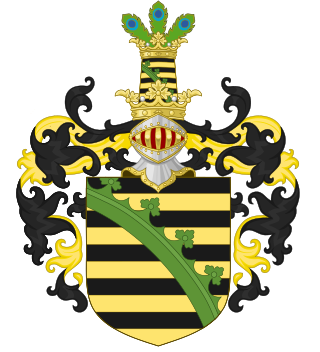
The House of Wettin is a dynasty of German kings, prince-electors, dukes, and counts that once ruled territories in the present-day German states of Saxony, Saxony-Anhalt and Thuringia. The dynasty is one of the oldest in Europe, and its origins can be traced back to the town of Wettin, Saxony-Anhalt. The Wettins gradually rose to power within the Holy Roman Empire. Members of the family became the rulers of several medieval states, starting with the Saxon Eastern March in 1030. Other states they gained were Meissen in 1089, Thuringia in 1263, and Saxony in 1423. These areas cover large parts of Central Germany as a cultural area of Germany.

The Danish royal family is the dynastic family of the monarch. All members of the Danish royal family except Queen Margrethe II hold the title of Prince/Princess of Denmark Or Count/Countess of Monpezat children of the monarch and of the heir apparent are accorded the style of His/Her Royal Highness, while other members of the dynasty are addressed as His/Her Highness. The Queen is styled Her Majesty.
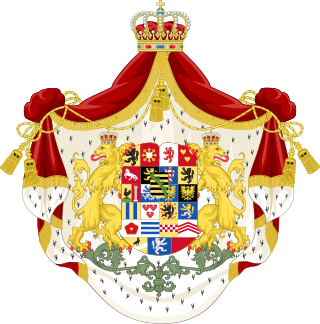
The House of Saxe-Coburg and Gotha is a European royal house. It takes its name from its oldest domain, the Ernestine duchy of Saxe-Coburg and Gotha, its members later sat on the thrones of Belgium, Bulgaria, Portugal, India, and the United Kingdom and its dominions.

Infanta Maria Ana of Portugal was a Portuguese infanta (princess), the eldest surviving daughter of Queen Maria II of Portugal and her King consort, Ferdinand II of Portugal, a member of the House of Braganza.

Prince Alexandre of Belgium was the fourth child of King Leopold III of Belgium, and the eldest for Lilian, Princess of Réthy. King Baudouin and King Albert II of Belgium were his older half-brothers. Grand Duchess Joséphine-Charlotte of Luxembourg was his older half-sister.

The Ernestine duchies, also known as the Saxon duchies, were a group of small states whose number varied and which were largely located in the present-day German state of Thuringia and governed by dukes of the Ernestine line of the House of Wettin.
The Orléanist claimant to the throne of France is Prince Jean, Duke of Vendôme. He is the uncontested heir to the Orléanist position of "King of the French" held by Louis-Philippe, and is also King Charles X's heir as "King of France" if the 1713 Treaty of Utrecht was valid. According to the Family Compact of 1909, only the descendants of the then pretender's father are considered to be dynasts of the House of France. The founders of the cadet branches of Orleans-Braganza and Orléans-Galliera, by becoming foreigners, are considered under house law to have renounced their rights to the throne. If the current line were to become extinct, the Orleans-Braganza have, however, reserved their right to renew their claims.
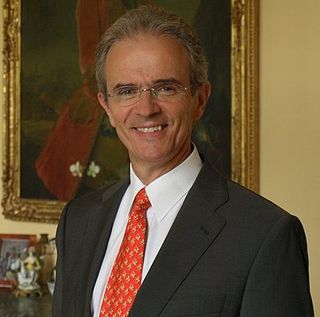
Alexander, Prince of Saxe-Gessaphe, is the adopted son and heir of Maria Emanuel, Margrave of Meissen, and a businessman with Lebanese, Turkmen, Mexican, French, Polish and German roots. Following the death of Maria Emanuel in July 2012 he assumed the headship of the Royal House of Saxony, based on a 1997 agreement that named him heir, but which was repudiated a few years later by a number of signatories. His claim is disputed by his cousin Prince Daniel of Saxony.
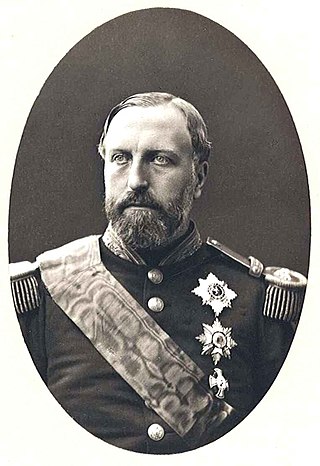
Prince Philippe of Belgium, Count of Flanders, was the third born and second surviving son of King Leopold I of Belgium and Louise d'Orléans. He was the brother of Leopold II of Belgium and Empress Carlota of Mexico.
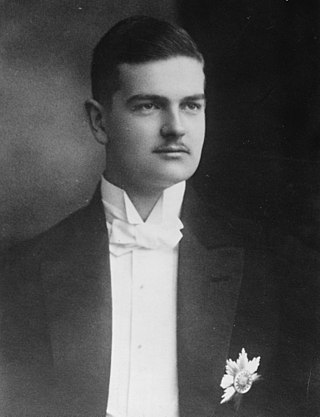
Albert Leopold Friedrich Christian Sylvester Anno Macarius, Prince of Saxony, Duke of Saxony, Margrave of Meissen was the second son of Frederick Augustus III, the last reigning king of Saxony before the abolition of the monarchy in 1918. Upon his father's death in 1932, he became the head of the Royal House of Saxony. He was Captain à la suite in the Royal Bulgarian Infantry, and Grand Master of the Order of the Rue Crown, and also a Knight in the Order of the Black Eagle and Knight Grand Cross in the Sovereign Military Order of Malta. As head of the House of Wettin after 1932, he styled himself as Friedrich Christian, Margrave of Meissen.
Prince Albert Joseph Maria Franz-Xaver of Saxony, Duke of Saxony, Margrave of Meissen was the head of the Royal House of Saxony and a German historian. The fourth child and youngest son of Friedrich Christian, Margrave of Meissen and his wife Princess Elisabeth Helene of Thurn and Taxis, he was the younger brother of Maria Emanuel, Margrave of Meissen, who was his predecessor as head of the Royal House of Saxony. Had he been King he would have been known as Albert II

Friedrich Günther, Prince of Schwarzburg was the final head of the House of Schwarzburg and heir to the formerly sovereign principalities of Schwarzburg-Rudolstadt and Schwarzburg-Sondershausen.
Prince Rüdiger Charles Ernest Timo Aldi of Saxony, Duke of Saxony, Margrave of Meissen was a disputed head of the Royal House of Saxony, and the only agnatic great-grandson of the last King of Saxony, Frederick Augustus III.
Daniel Timo Prinz von Sachsen, Herzog zu Sachsen, Margrave of Meissen, politician and entrepreneur, is the oldest son and heir of Rüdiger, Margrave of Meissen, a disputed Head of the deposed Royal House of Saxony. Daniel was a candidate to become King of Poland. He is a founder of the Wettin Forest Service and the Wettiner Golf Cup.

John Charles, Count Palatine of Birkenfeld at Gelnhausen, was a German prince and ancestor of the cadet branch of the royal family of Bavaria known, from the early 19th century, as Dukes in Bavaria. He took Gelnhausen as the name of his branch of the family after acquiring that estate in 1669.

Countess Karoline Friederike Cäcilie Klothilde von Wartensleben was a German noblewoman. She is a maternal great-great-grandmother of King Willem-Alexander of the Netherlands.
References
- ↑ Willis, Daniel (1999). "The Ducal Family of Parma". The Descendants of Louis XIII. Baltimore: Clearfield. pp. 327–328, 766. ISBN 0-8063-4942-5.
- ↑ Velde, François. "Laws of the Kingdom of Saxony". Heraldica.org. Retrieved 2008-04-18.
- ↑ Willis, Daniel (1999). "The Ducal Family of Parma". The Descendants of Louis XIII. Baltimore: Clearfield. pp. 327–328, 766. ISBN 0-8063-4942-5.
- ↑ Cannuyer, Christian (1989). "Saxe". Les maisons royales et souveraines d'Europe (in French). Tournhout, Belgium: Editions Brepols. p. 207. ISBN 2-503-50017-X.
Descendant en ligne directe de l'Emir Mansur 'Asaf bin Hassan, prince du Liban (1522-1580), dont le petit-fils Afif, Emir en Kisrowan, fut l'ancêtre de la lignée des Sheikhs de Bkessin qui se convertirent au christianisme et dont l'époux de la Princesse Marie-Anne est issu.
- ↑ Huberty, Michel; Alain Giraud; F. and B. Magdelaine (1991). "Familles Nobles Alliées". L'Allemagne Dynastique Tome VI Bade/Mecklembourg (in French). France. pp. 475–476. ISBN 2-901138-06-3.
- ↑ Huberty, Michel; Alain Giraud; F. and B. Magdelaine (1988). L'Allemagne Dynastique Tome V Hohenzollern-Waldeck (in French). France. p. 267. ISBN 2-901138-05-5.
- ↑ Willis, Daniel (1999). "The Ducal Family of Parma". The Descendants of Louis XIII. Baltimore: Clearfield. pp. 327–328, 766. ISBN 0-8063-4942-5.
- ↑ Velde, François. "Laws of the Kingdom of Saxony". Heraldica.org. Retrieved 2008-04-18.
- ↑ Die Welt, 20 May 1997
- ↑ Velde, François. "Laws of the Kingdom of Saxony". Heraldica.org. Retrieved 2008-04-18.
- ↑ Velde, François. "Reading Notes on Family Law in German Ruling Families of the 19th c." Heraldica.org. Retrieved 2008-04-18.
- ↑ Velde, François. "Reading Notes on Family Law in German Ruling Families of the 19th c." Heraldica.org. Retrieved 2008-04-18.